Nirvana - Songlife
by Malcolm Carter
published: 14 / 2 / 2021
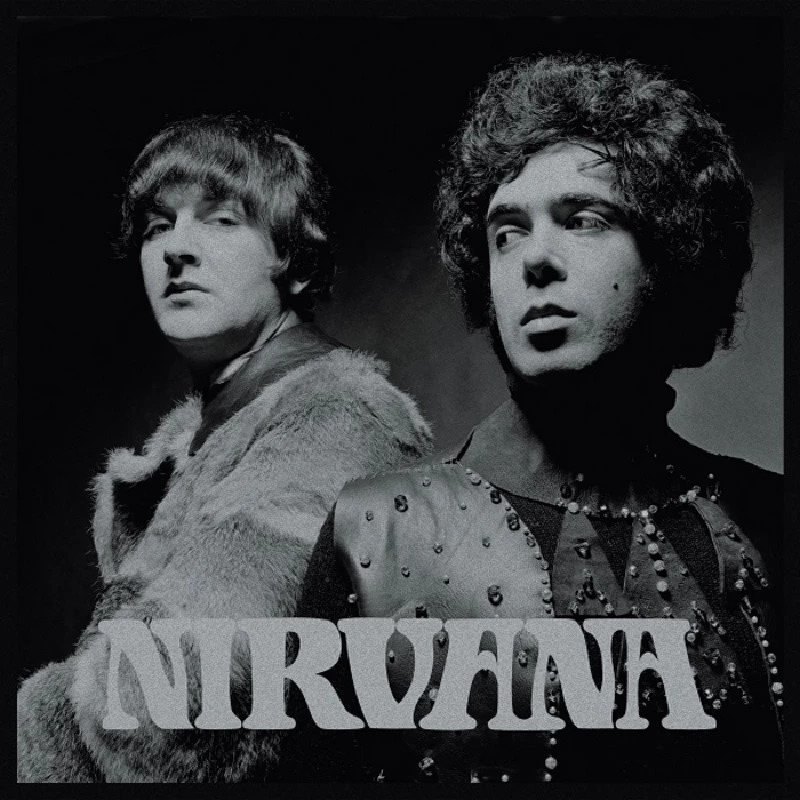
intro
Malcolm Carter examines 'Songlife', a new vinyl box set from 1960's pop/psychedelic act Nirvana, which combines five albums plus a previously unreleased musical.
To make this personal for a little while there are a few things I’d like to get down about Nirvana. Way back in time, when things were simpler and we didn’t have to worry about stepping outside of our home, discussions were rife about who was the first to make a ‘rock opera’. At that time ‘Tommy’ by the Who was usually regarded as the first. But those who thought they knew better would retaliate with ‘S.F. Sorrow’ by the Pretty Things. Now far be it from this writer to make any bold claims but, depending on what your definition of a rock opera is, ‘Tommy’ was released in May 1969, ‘S.F. Sorrow’ in December 1968 and the debut by a little-known band called Nirvana, ‘The Story of Simon Simopath’ hit the shops in October 1967. No contest then, except Nirvana were never a rock band as I was constantly reminded. True, many labelled them a psychedelic band based on the only two songs many had heard from this unique band, but there was more, so much more, to their music than the admittedly psychedelic tracks. I felt for a time that I was the only person in the world who knew and appreciated Nirvana and during those awkward teenage years I felt a kinship with the fictional Simon Simopath. The album was housed in a beautiful psychedelic gatefold sleeve which just screamed 1967 but is still fascinating today, and the music was a unique but perfect blend of orchestral/baroque intelligent pop music. A treasure chest of gems in fact. Mention Nirvana today and any response will be about some noisy three-piece band from America. It’s another story but it annoys this writer no end that even now if you put Nirvana (even Nirvana UK) on the Amazon Music side even though the correct album covers will be displayed the photo of the band at the top of the page certainly is not the band of 1967 nor are the separate song titles listed as available! But, hey, maybe some curious soul will click on one of the images and be in for the treat of their life. Nirvana, for all the musicians involved in their glorious sound, was basically the musical child of two musicians. Irishman Patrick Campbell-Lyons and Greek Alex Spyropoulos always seemed like an odd duo, but the music they created together really was like no other. For a while Campbell-Lyons carried on making music under the Nirvana name without involvement from Spyropoulos, and, while that was never anything short of fascinating, the music produced from the period the duo worked together is not only some of the most beautiful ever made it’s also stood the test of time sounding as fresh today as it did in the late ‘60s. After years of being unavailable Nirvana’s albums were eventually given a new lease of life when the CD arrived. Reissues arrived on various labels; there was even a box set of three CDs, ‘Chemistry’, on Edsel. It gave many their first chance to hear some of the songs from the band's third album titled ‘Dedicated To Markos 111’ or ‘Black Flower’ (confusing, eh?) their first album not to be issued on the Island label; the Pye label just didn’t seem to fit with the band's image or their music. Since that box set there have been a handful of reissues; Repertoire, Esoteric and even Island have all kept the flag flying. Beginners should go for ‘Rainbow Chaser: The 60s Recordings’ a brilliant compilation of their Island years but obviously given the title a lot of their best later work is absent. Madfish Music, who always give their releases that little extra touch which makes them essential purchases, have now issued (or will shortly; the release date has been changed from late February until early March 2021) a vinyl box set of six Nirvana albums. The set is limited to 1,000 copies worldwide and features the band's five original studio albums from 1967 to 1972 plus the previously unreleased ‘Secrets’ album from 1972. Four of the original albums have been remastered from the original ¼ inch tapes. And while it’s ultimately the music that matters there’s a 52-page booklet included with the band’s history detailed by Peter Doggett, one of the best music journalists we have. If that’s not enough the booklet also features stunning photos, newspaper clippings and a full discography. An exclusive Gered Mankowitz print signed by the band is also part of the set. So, do those who have bought the various CD reissues over the years need this box set? For those who have worn-out copies of the original albums the answer is a resounding yes. The original Nirvana albums, as good as some of the reissues are, are made for vinyl. While none of the albums which followed ‘Simon Simopath’ were housed in such a stunning or elaborate sleeve (although ‘Local Anesthetic’ is in the running), holding and listening to Nirvana on vinyl just feels so right, especially when Madfish have produced a set so stunning as ‘Songlife’. For those smitten by the beauty of the music on the various reissues and compilations then there are many more similar treasures to be found in this box set; it’s worth every penny. If a fading memory serves me well then my own initial awareness of Nirvana’s musical beauty happened a couple of months before the release of ‘The Story of Simon Simopath’. The sadness that prevailed on the ‘Tiny Goddess’ single left an impression that five decades on still has the ability to send shivers down the spine. The strings, the almost otherworldly backing vocals and the lead vocal make this track one of the saddest but greatest love songs ever written. A cover by Swedish band the Jackpots beefed up the song a little but still retained its beauty, while even Francoise Hardy’s handling of the song still couldn’t match the melancholy in Nirvana's original. When ‘Simon Simopath’ arrived a few months later it did not include ‘Tiny Goddess’ probably due to the album being a story in itself. But tracing the life of Simon Simopath over the space of ten songs Simon does eventually meet his tiny goddess in the form of Magdalena, and they marry after a life in which Simon felt lonely, rejected and suffered from depression. While that might sound depressing in itself, the music is simply beautiful. One of Nirvana’s best-known songs, ‘Pentecost Hotel’ which is representative of the whole album preceded the album by a month and gave an irresistible taster for what was to come. Herman’s Hermits made a fair stab at the opening song, ‘Wings of Love’ but it doesn’t come close to the dramatic reading of the original and shorn of the rest of the story loses much of its appeal. The appeal of the songs on the album did not go unnoticed by other bands; The Alan Bown, then changing from an R’nB influenced group into their psychedelic phase, recorded an excellent version of ‘We Can Help You’. ‘All of Us’ takes up disc two of the box set. A dozen songs this time featuring the sublime ‘Tiny Goddess’. While the orchestral/ baroque genes were still very evident traces of a more experimental vision started to show through while still retaining a perfect pop sensibility. The album kicks off with ‘Rainbow Chaser’ a phased drench slice of psychedelia which for many wrongly defined what Nirvana were all about. All these years later it’s still a perfect example of psych-pop. The album also featured a future single in ‘Girl in the Park’, which was again a little pop gem with lyrics and music a little edgier than most of what the band had recorded up until that point. Once again, its potential was picked up by another band; this time the Smoke best known for ‘My Friend Jack’ cut the song but it was not released at the time. ‘All of Us’ followed no concept; there was no connecting story this time just a dozen stand-alone beautifully crafted pop songs of such quality and commercial appeal that four of the tracks were considered by Island to be good enough to be issued as singles. One of these from which the album took its title, ‘The Touchables’, or ‘All of Us’ as it was named on the single version, was chosen to be the main theme of a film also titled 'The Touchables'. Unfortunately, the movie met the same fate as a lot of Nirvana’s music and failed to gain a wide audience. That the lush, orchestral ‘Melanie Blue’ was tucked away at the far end of side one of the album was almost criminal. As with all of the songs on ‘All of Us’ the song is blessed with a gorgeous melody and the performance and arrangement are superb. The haunting instrumental ‘The Show Must Go On’ is surely one of the most affecting non-vocal tracks created in that period. The opening of ‘Miami Masquerade’ shows that the duo had been watching James Bond films before it unfolds into more normal Nirvana territory. There are even traces of the Beach Boys on ‘You Can Try It’, a connection which often comes to light. Even what could have been the introduction of what sounds like the Chipmunks on ‘Everybody Loves the Clown’ can’t detract from the fact that ‘All of Us’ was the perfect orchestral pop album, entirely of its time but still sounding remarkably fresh. There are so many ideas floating around there it really shouldn’t have worked. But it did. Beautifully. Then, after two albums on Island which should have been massive sellers, things started to go awry. Nirvana’s third album appeared on Pye in the UK. The reason the album has since appeared with two different titles has been repeated many times before and Doggett’s explanation in the booklet tells it well; we will refer to it as ‘Black Flower’ here. From the opening song, ‘The World is Cold Without You’ shows that the band had lost none of the beauty or vision shown in their previous albums. Again orchestral, melodic pop was the order of the day, glorious arrangements which hit home instantly and more little stories set to songs never outstayed their welcome (only one song here tips the six-minute mark). While their music was always adventurous on the title track the band push boundaries even further; the closing, searing lead guitars put many contemporary progressive bands to shame. Lesley Duncan (so talented yet never given the recognition she deserved, not only on her own records but as a session singer) lends her vocals to ‘Love Suite’. expanding on the jazz influence which occasionally broke through on Nirvana’s work. The final song on ‘Black Flower’ was ‘Illinois;, another irresistible melody that didn’t go unnoticed by The New Seekers who soon set about recording the song. After three albums, all of which should have reached the upper echelons of the album charts, Campbell-Lyons and Spyropoulos went their own ways amicably. Campbell-Lyons took a post as A&R manager for the mighty Philips Records which eventually led him to revive the Nirvana name for what was really a solo album backed by members of Jade Warrior and Second Thoughts. ‘Local Anaesthetic’ was two lengthy suites, one per side named ‘Modus Operandi’ and ‘Home’, the latter consisting of five separate parts. Nirvana as we knew and loved them it wasn’t. According to the liner notes, Campbell-Lyons had "found and given birth to the real Nirvana," Was it because of the lack of input from Spyropoulos or because Campbell-Lyons was tired of creating such beautiful music and not getting the acclaim he deserved that this album is so far removed musically from the previous albums? Who knows and while the extended pieces do have some redeeming moments it was the first Nirvana album that didn’t demand instant repeated playing. After fourteen minutes of disjointed fragments of music the first side closes with a music-hall singalong. Maybe Campbell-Lyons understood it, plenty didn’t. Even the short rhythmic opener to side two, ‘Salutation’ was a welcome relief after that first side; then with ‘’Construction’ we are almost in familiar Nirvana territory. It can hardly be labelled orchestral pop, and, although there are still glimpses, it sounds more of its time (1971) now than Nirvana’s earlier albums. Despite some outstanding lead guitar work, this really could have been any band from that era. The sad thing is the beauty in Nirvana’s work is still there in the second side, it’s just not given the chance to shine through, and while fans can appreciate Campbell-Lyons had to try to move with the times the unique sound of Nirvana on those first albums has never aged and was one that he maybe should have stuck with. Then in 1971 came a single bearing the Nirvana name on the Philips label. So, it was a reworking of ‘Pentecost Hotel’, a little worrying as how can you improve on perfection, but it did in fact work well. A school choir took the place of an orchestra and the song took on a new life. A more stripped-back affair than the original, the introduction of the choir actually added another dimension to the song. Also released around that time was another single under the name of Pica (which Campbell-Lyons had used before) which also updated a classic Nirvana song, this time ‘Rainbow Chaser’ which was given an even more dramatic reading. Brass and an almost funky vibe turned the song around but still it worked. A few months later and yet another 45 arrived bearing the Nirvana name, this time a new song, ‘Stadium’. It gave hope that Campbell-Lyons was back on track as Nirvana. Utterly out of sync with what his contemporaries were creating in 1971, it was overflowing with ideas and almost too much to take in on the first listen. The hope paid off as early 1972 saw the release of ‘Songs of Love and Praise’. It featured all of the above singles which was a good way to entice the older Nirvana devotees while attracting potential new fans. The beautiful, string-laden ‘Lord Up Above’ was proof enough that no matter how disappointed and confused fans were with ‘Local Anaesthetic’ Campbell-Lyons was back on form. The nine tracks may not all have been up there with those on the first three albums, but they were close and, hey, Nirvana was back. Except it wasn’t. Campbell-Lyons continued making music but with the exception of his solo 1973 album, ‘Me and My Friend’, most of his work passed Nirvana fans by. But in 1976 on yet another label a single appeared under the name Nirvana, this time with involvement from Spyropoulos. ‘Secrets’ was apparently, according to the Bradley Record label, an extract from 'Blood', a forthcoming musical. Then it gets complicated again in true Nirvana fashion and again this period is detailed brilliantly in Peter Doggett’s booklet. That single is now part of ‘Secrets’, the sixth album in the ‘Songlife’ box set and the only part of the collection which hasn’t been available in any form before. The sound quality, given that these performances are basic demos, is obviously not as good as the remastered original albums but brings the music created by Campbell-Lyons and Spyropoulos full circle. They started with a rock/pop opera and finished (maybe) with a theatrical work , which, had it been released in 1976, would have probably been the most commercially successful project the duo had been involved in. There’s even a few nods to earlier Nirvana songs in ‘Secrets’ which makes it even more interesting listening. Campbell-Lyons and Spyropoulos still write and record the occasional song together and their friendship is as strong as ever. So, who knows? Maybe we will hear more from the duo in the future but for now this vinyl collection on Madfish which faithfully reproduces those glorious early albums without any unnecessary extras tagged on is an essential purchase for any fan of ‘60s/70s psych and progressive music. There really hasn’t been another band like Nirvana.
Band Links:-
https://en.wikipedia.org/wiki/Nirvana_(British_band)Play in YouTube:-
Picture Gallery:-
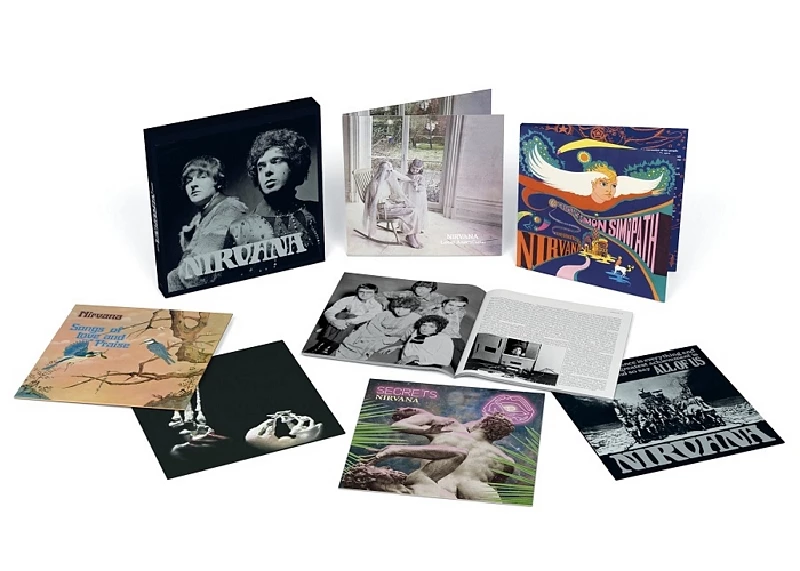
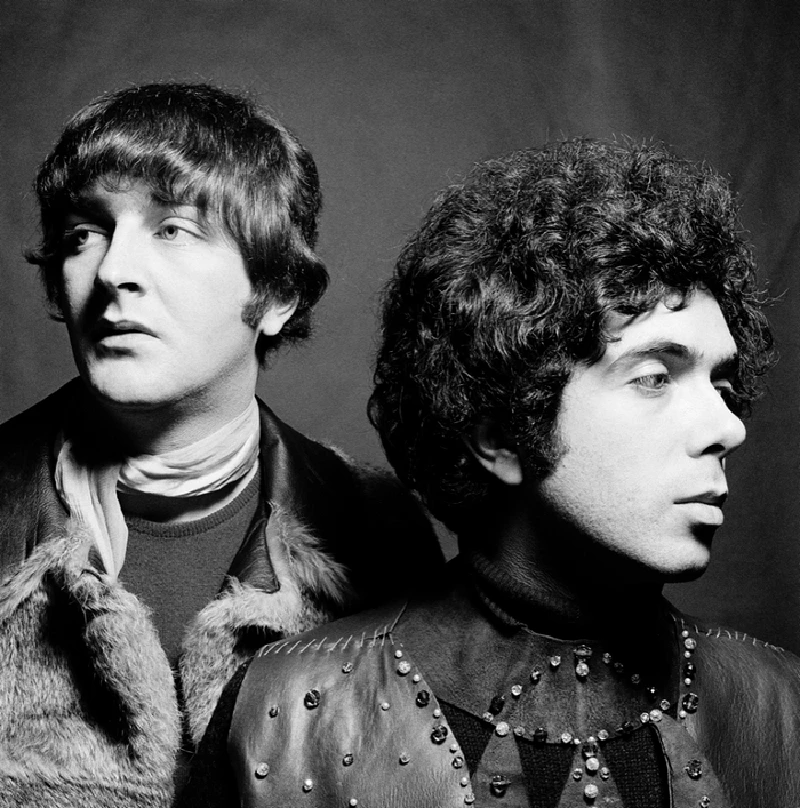
interviews |
|
Interview with Patrick Campbell-Lyons (2021) |
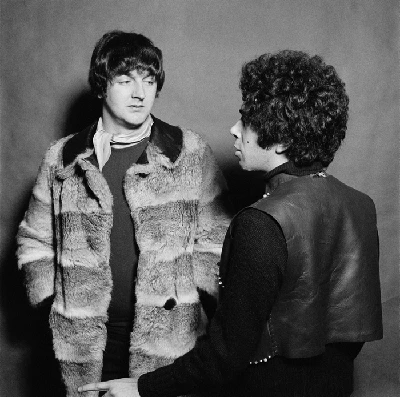
|
| John Clarkson speaks to Patrick Campbell-Lyons from influential 60’s orchestral group Nirvana about his group’s career and their new vinyl box set ‘Songlife’. |
| Interview (2002) |
profiles |
|
Entertain Us: The Rise of Nirvana (2012) |
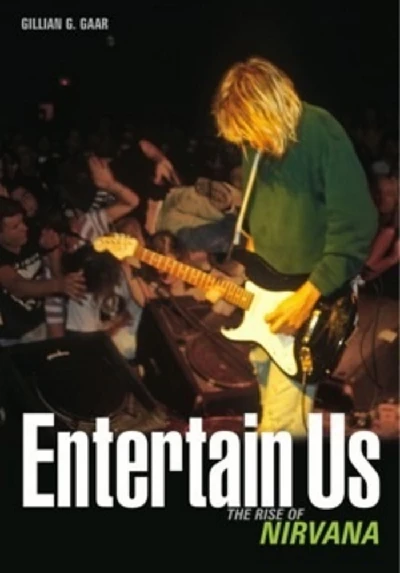
|
| Fiona Hutchings reflects upon Seattle-based journalist Gillian G. Gaar's meticulously researched and fantastic new biography on Nirvana's early years |
| Live at Reading (2009) |
favourite album |
|
Nevermind (2011) |
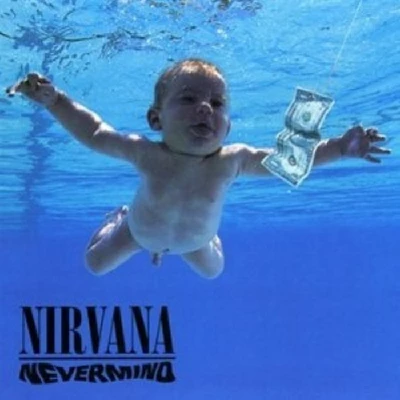
|
| Anthony Dhanendran reflects upon the various new editions of Nirvana's classic second album, 'Nevermind', which have been released to coincide with its twentieth anniversary |
features |
|
Nirvana, Reading Festival 1992 (2012) |

|
| Paul Waller, in our 'Gig of a Lifetime' series, writes of seeing Nirvana's legendary headlining gig, at the 1992 Reading Festival |
most viewed articles
current edition
John McKay - InterviewRobert Forster - Interview
Cathode Ray - Interview
Spear Of Destiny - Interview
Fiona Hutchings - Interview
When Rivers Meet - Waterfront, Norwich, 29/5/2025
Carl Ewens - David Bowie 1964 to 1982 On Track: Every Album, Every Song
Chris Wade - Interview
Brian Wilson - Ten Songs That Made Me Love...
Shrag - Huw Stephens Session 08.12.10 and Marc Riley Session 21.03.12
previous editions
Heavenly - P.U.N.K. Girl EPBoomtown Rats - Ten Songs That Made Me Love....
Allan Clarke - Interview
Oasis - Oasis, Earl's Court, London, 1995
Manic Street Preachers - (Gig of a Lifetime) Millennium Stadium, Cardiff, December 1999
Barrie Barlow - Interview
Pixies - Ten Songs That Made Me Love...
Beautiful South - Ten Songs That Made Me Love...
Trudie Myerscough-Harris - Interview
Dwina Gibb - Interview
most viewed reviews
current edition
Peter Doolan - I Am a Tree Rooted to the Spot and a Snake Moves Around Me,in a CircleGarbage - Let All That We Imagine Be The Light
Vinny Peculiar - Things Too Long Left Unsaid
Vultures - Liz Kershaw Session 16.06.88
John McKay - Sixes and #Sevens
Little Simz - Lotus
HAIM - I Quit
Morcheeba - Escape The Chaos
Pulp - More
Lapsley - I'm a Hurricane, I'm a Woman In Love
Pennyblackmusic Regular Contributors
Adrian Janes
Amanda J. Window
Andrew Twambley
Anthony Dhanendran
Benjamin Howarth
Cila Warncke
Daniel Cressey
Darren Aston
Dastardly
Dave Goodwin
Denzil Watson
Dominic B. Simpson
Eoghan Lyng
Fiona Hutchings
Harry Sherriff
Helen Tipping
Jamie Rowland
John Clarkson
Julie Cruickshank
Kimberly Bright
Lisa Torem
Maarten Schiethart